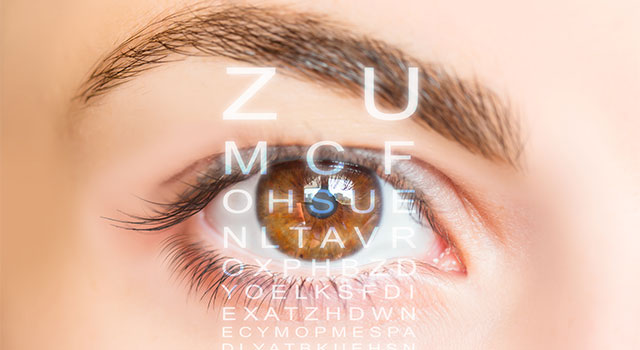Understanding the Various Eye Issues Treated by Specialized Eye Care Professionals
In the realm of eye treatment, specialized specialists play a critical function in diagnosing and treating a large selection of eye problems. As we begin on this exploration of the different eye conditions addressed by specialized eye treatment professionals, it ends up being obvious that the complex internet of eye health holds a myriad of remarkable understandings waiting to be uncovered.
Usual Refractive Mistakes
Refractive mistakes are common visual conditions brought on by a blemish in the eye's ability to correctly concentrate light, causing obscured vision. One of the most common kinds of refractive mistakes include myopia (nearsightedness), hyperopia (farsightedness), astigmatism, and presbyopia. Myopia takes place when the eyeball is also lengthy or the cornea is too bent, creating distant items to appear blurred. Hyperopia, on the various other hand, happens when the eyeball is as well brief or the cornea is as well flat, bring about close-by things being out of emphasis. Astigmatism is identified by an irregularly shaped cornea, causing distorted or blurred vision whatsoever distances. Presbyopia is an age-related condition where the lens loses its flexibility, making it challenging to concentrate on close items.
These refractive mistakes can be dealt with with numerous approaches, consisting of eyeglasses, call lenses, or refractive surgery. Eye treatment specialists play a critical role in identifying and taking care of refractive errors to help people achieve more clear vision and improve their quality of life.
Age-Related Eye Problems
One of the most common age-related eye problems is age-related macular degeneration (AMD), a condition that triggers main vision loss and can make tasks like analysis and driving difficult. Cataracts, one more common condition amongst older individuals, trigger clouding of the eye's natural lens, leading to obscured vision. Normal eye tests with specialized eye treatment experts are important for early detection and management of these age-related eye problems to maintain vision and preserve ocular health as people expand older.
Vision-Threatening Illness
Vision-threatening diseases encompass an array of significant ocular conditions that have the potential to significantly influence a person's eyesight and total aesthetic function. These diseases posture a threat of long-term vision loss if not promptly detected and treated by specialized eye treatment experts. Some common vision-threatening conditions consist of YOURURL.com glaucoma, diabetic retinopathy, age-related macular degeneration (AMD), and retinal detachment.
Glaucoma is a group of eye problems that damage the optic nerve, often as a result of high intraocular pressure, bring about field of vision loss and potential loss of sight if left without treatment. Diabetic retinopathy is a problem of diabetes that impacts blood vessels in the retina, triggering vision impairment or loss of sight. AMD is a progressive problem affecting the macula, causing central vision loss. Retinal detachment happens when the retina separates from its underlying cells, causing unexpected vision loss that calls for instant clinical attention (refractive surgeries in al).
Early discovery, normal eye exams, and prompt treatment are important in taking care of vision-threatening diseases to protect sight and maintain lifestyle. Specialized eye treatment professionals play a crucial role in diagnosing, treating, and handling these problems to stop permanent vision loss.

Corneal Disorders
Corneal problems encompass a spectrum of conditions that affect the transparent front component of the eye, recognized as the cornea. Treatment for corneal conditions differs depending on the certain problem however might include medications, call lenses, or in severe cases, corneal transplants. Regular eye examinations are important for early discovery and monitoring of corneal conditions to preserve vision and eye health and wellness.
Neurological Eye Conditions
Neurological eye conditions involve conditions that affect the link between the eyes and the brain, affecting aesthetic handling and general eye function. These conditions Recommended Reading can manifest in various means, impacting vision, eye movements, and also the control in between the eyes. One usual neurological eye problem is optic neuritis, defined by inflammation of the optic nerve resulting in vision loss, color desaturation, and discomfort with eye activity.
An additional substantial problem is nystagmus, where the eyes make repeated, uncontrolled activities, influencing aesthetic acuity and depth assumption. Furthermore, conditions like amblyopia, usually referred to as "lazy eye," arise from irregular visual development in very early youth, resulting in reduced vision in one eye.
Neurological eye see this here problems call for customized care from professionals like neuro-ophthalmologists that have expertise in both neurology and ophthalmology. Medical diagnosis commonly involves a comprehensive eye exam, imaging research studies, and cooperation with specialists to deal with the underlying neurological concerns impacting the visual system. Therapy approaches can consist of medication, vision treatment, or in severe instances, surgical treatments to handle these intricate conditions properly.

Conclusion
To conclude, specialized eye treatment experts treat a vast array of eye conditions, consisting of usual refractive errors, age-related eye conditions, vision-threatening conditions, corneal problems, and neurological eye problems - refractive surgeries in al. By understanding these various problems and seeking suitable therapy from eye treatment experts, people can keep ideal eye health and vision. It is very important to focus on regular eye exams and adhere to suggested treatment strategies to protect and protect one's vision for the future
 Mason Gamble Then & Now!
Mason Gamble Then & Now! Jeremy Miller Then & Now!
Jeremy Miller Then & Now! Marla Sokoloff Then & Now!
Marla Sokoloff Then & Now! Sam Woods Then & Now!
Sam Woods Then & Now! Teri Hatcher Then & Now!
Teri Hatcher Then & Now!